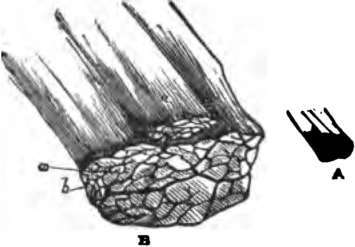How The Muscles Are Controlled
Description
This section is from the book "The Human Body: An Elementary Text-Book Of Anatomy, Physiology, And Hygiene", by H. Newell Martin. Also available from Amazon: The Human Body.
How The Muscles Are Controlled
Most of the muscles of the body are paired in a double sense. In the first place, to nearly every one answers a corresponding muscle on the opposite side of the body,* its true mate ; in addition, most are paired with, or rather pitted against, an antagonist; for example, to the biceps muscle (Fig. 29) which lies in front of the humerus and bends the elbow joint, corresponds the triceps muscle which lies behind the arm bone and extends the elbow; when the biceps contracts the triceps relaxes, and vice versa. This orderly working is carried out by means of the brain and spinal cord, which, through the nerves, govern the muscles and regulate their activity. In convulsions these controlling organs are out of gear, and the muscles are excited to contract in all sorts of irregular and useless ways ; antagonists pulling against one another at the same moment the whole body is made rigid.
A digastric. Where do we find a polygastric muscle? How is the rectus abdominis muscle constituted ? Where are flat wide muscles found ?
In what two ways are muscles paired? Give an example of antagonistic muscles. What happens to the triceps when the biceps contracts? How is the orderly working of the muscles guided and controlled? What parts are out of working order in a fit of convulsions? Why do the limbs often become stiff in convulsions?
* The single muscles cross the middle line and are made up of similar right and left halves; examples are orbicularis oris and the diaphragm.

Fig. 32. A small bit of muscle composed of four primary fasciculi. A, natural size ; B, the same magnified, showing the secondary fasciculi of which the primary are composed.
Continue to:
